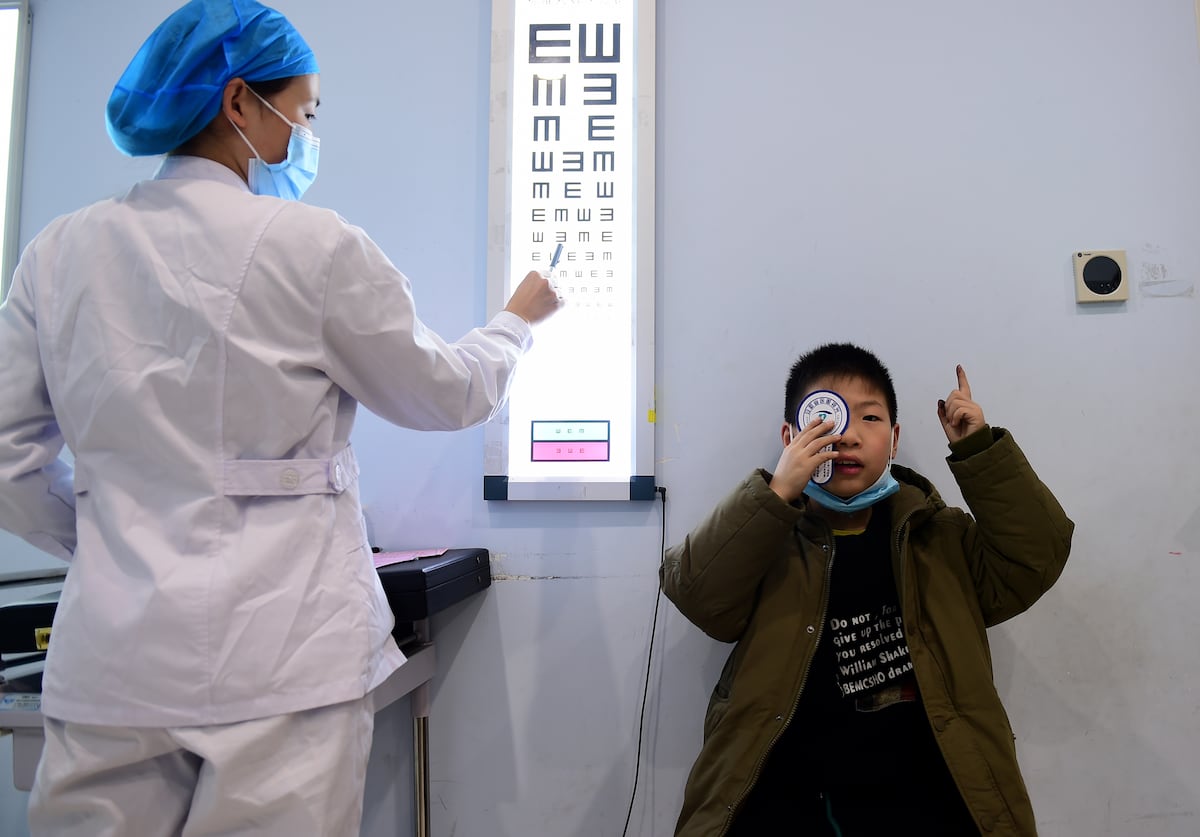Maybe it’s the plastics in our blood?
Age
Or the obesity?
Or the fucking pervasive mobile devices in front of our faces from a young age?
Or the pollution?
More like looking at stuff near to our eyes all the time - e.g. a screen
No I think it’s the being inside all the time doing things close up. At least that’s what my optometrist told me when I developed childhood myopia.
Edit:🤦I should have read the article first.
More people than ever are getting dementia and cancer.
The common culprit? Age.
Masturbated once, now I’m blind.


JesuChristo
1st world countries have myopia. 3rd world countries do not. People in 3rd world countries that are emerging into 1st world countries will develop myopia. Less exposure to the full brightness of the sun in the infinite activity of the outdoors and increased time spent indoors with indoor lighting and stagnant vision environment leads to myopia. The eyes are the most intimately connected organ to the brain - perhaps you should rethink your vision lifestyle. Is it good for you to be stare at a webpage with increasingly larger fonts on a smartphone 12in/30cm away from your eyes? Probably not. Eyes are supposed to constantly be moving (saccade) and should not be dry. Great eye health is a great life. Sincerely, someone who has proactively one from -2.25 in to -1.75 in both eyes in 9 months time.
I truly believe that in first world countries, it’s because of insanely bright headlights. I remember reading that they’re 3,000x brighter than they were in the 1990s and because trucks are getting taller, they point more at other drivers than they ever have. My library even rents out night driving glasses so people can see if they’re beneficial.
Oh yeah? Well my pappy told me it’s all cuz of them femboys everybody is watching. Ruins your retinas.
I’d ruin my retinas to see some femboys any day
I could ruin your retinas 👉👈
The length anti car people will go to spread their propaganda…
It’s watching screens at close range for 10 hours a day.
Just think about how little of your time the average person spends crossing trucks at night. That’s not even 15 minutes a year.
I might have missed something, but who’s anti car? You’re ABSOLUTELY correct about screen time; but it is worth noting that the amount of prescriptions for night driving glasses are higher than they’ve been in history. I travel often and, even in my SUV, I can’t stand that large/superduty truck lights don’t point downward enough… It’s downright blinding at times. I can’t imagine what someone in a sedan is seeing. It’s not just passing them at night, you get hit through rear view mirrors if they’re behind you and at red lights, too, which can add up to multiple hours a week depending on your commute/schedule. The laws in the 90s were based on fluorescent brightness, and should probably be updated, that’s all. It’s not truck owners fault that the lights are designed like that.
People think blu-ish light is more blinding, it’s just not. But it’s different and getting blinded still sucks.
As for lens prescription, that’s because there’s never been this many old people.
Truck lights should be at the same height as other cars. It’s unnecessary to have them up there, except for aesthetics.
You’re right on most points, but in the south it’s definitely more than 15 minutes a year. Those fuckers are even blinding in the daytime.
Not just screens. Books are just as bad. Human eyes aren’t really optimized for staring at a single fixed distance for hours at a time, every single day, throughout childhood development.
Yeah best thing for your eyes is to regularly look out into the distance in between whatever you’re doing.
I’ve been led to believe kids in China are too busy working in sweatshops to be overusing screens.
You’ve been led to believe some bullshit by Western corporate media. Meanwhile, in the Land of the Free™: Illegal child labor surging in the U.S.
The CNN Freedom Project is shining a light on illegal child labor. It’s often considered a problem mainly in developing countries, but it’s surged 88% in the United States over the past five years.
Smartphones, tablets, and general increased screen time.
Good thing glasses are sexy!
It’s lack of sun, kids who grow up with a lack of adequate sunlight exposure have increased risk of myopia.
It’s not screens, at least not directly, but indirectly since they keep kids inside more.








